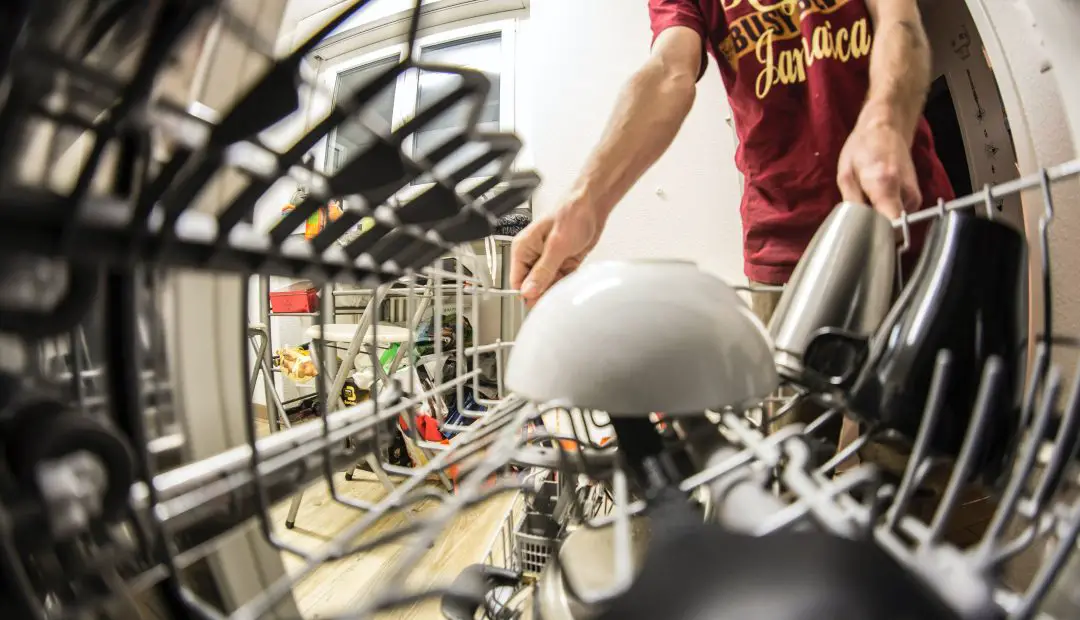Is your dishwasher not going through cycle? It’s a common issue that many homeowners face, but don’t worry. This guide will walk you through some of the most common solutions.

Check the Power Source
Before you jump into more complex solutions, make sure the dishwasher is properly plugged in and the circuit breaker is not tripped.
- Check the electrical outlet where the dishwasher is plugged in. Make sure it is secure.
- If uncertain, test the outlet by plugging in another appliance.
- Check your home’s circuit breaker box to ensure the breaker for the dishwasher is in the ‘On’ position.
Inspect the Control Panel
It’s possible that the issue lies with the dishwasher’s control panel.
- Look for any error codes or lights on the control panel.
- Consult your dishwasher’s user manual for the meaning of these codes and follow the recommended actions.
- If needed, reset the control panel by unplugging the dishwasher, waiting 30 seconds, and plugging it back in.
Examine the Door Latch
If your dishwasher is not going through its cycle, a faulty door latch could be the culprit. A well-functioning latch ensures the dishwasher door is sealed tightly during the cycle.
- Check the latch mechanism to see if it’s broken or loose: Open and close the dishwasher door a few times, paying close attention to the latch. If it feels loose or wobbly, or if the door doesn’t close securely, you likely have a problem with the latch mechanism.
- If you find any issues, you may need to replace the latch: A malfunctioning latch may require replacement. Replacement latches can usually be ordered online or purchased at an appliance repair store. Be sure to get a latch that’s compatible with your dishwasher model.
- Follow your user manual for latch replacement instructions: Your dishwasher’s user manual will have specific guidelines on how to replace the latch. Following these instructions carefully will help ensure that the new latch is installed correctly, allowing your dishwasher to go through its cycles smoothly.
Review the Water Supply
Adequate water supply is critical for your dishwasher to complete its cycle. If there’s an issue here, your dishwasher might halt mid-cycle or not start at all.
- Check if the water supply valve is fully open: Locate the water supply valve, often found under the sink or behind the dishwasher. Turn the valve to ensure it’s in the fully open position. If it’s partially closed, this could affect the water supply to the dishwasher.
- Inspect the water inlet hose for kinks or obstructions: The water inlet hose is what connects the water supply valve to your dishwasher. Check it for any kinks, bends, or obstructions that could be restricting water flow. If you find any, straighten out the hose and remove obstructions if possible.
- If needed, replace the water inlet hose: If the hose appears damaged or old, it’s advisable to replace it. Hoses are generally inexpensive and can be found at most hardware or appliance stores. Make sure to pick a hose compatible with your dishwasher model and follow the installation instructions carefully.
For more articles on dishwashers, click here: Dishwasher Problems and Solutions: Your Ultimate Guide to Hassle-free Dishwashing
Clean the Spray Arms
If your dishwasher is not going through its cycle as it should, clogged spray arms could be an underlying issue. Over time, food particles, mineral deposits, and other debris can block the holes in the spray arms, affecting the dishwasher’s ability to clean your dishes properly.
- Open the dishwasher and locate the spray arms: First, ensure that the dishwasher is turned off and emptied of any dishes. Open the door and pull out the bottom rack to locate the lower spray arm. The upper spray arm is generally attached to the bottom of the top rack. Make sure you identify both.
- Remove any visible debris from the spray arms’ holes: Using a toothpick or a piece of fine wire, carefully poke through the holes in the spray arms to remove any visible debris. A flashlight can help you see better. Be gentle to avoid damaging the holes.
- For a thorough cleaning, remove the spray arms and soak them in a mixture of water and vinegar: Consult your dishwasher’s user manual for instructions on how to detach the spray arms. Once removed, soak them in a sink filled with a mixture of warm water and vinegar (typically a 50/50 ratio will work well) for at least an hour. This helps to dissolve mineral deposits and loosen any remaining debris. After soaking, rinse the arms thoroughly under running water and then reattach them to the dishwasher according to the manual’s instructions.
Dishwasher Not Going Through Cycle: Conclusion
By following these steps, you should be able to diagnose and fix the issue of your dishwasher not going through cycle. For more complex issues, consult a professional.